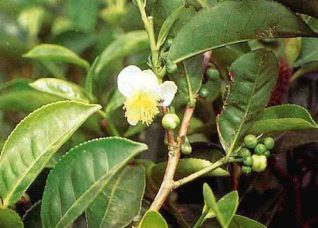
MinerAlert

MinerAlert
Hebanthe paniculata
Amaranthaceae
“Brazilian ginseng”*, para tudo, pfaffia, corango-acu

This shrubby plant is native to the Central and South American tropics (Duke et al., 2009; Schultes and Raffauf, 1990).
The root is decocted in water and taken as a tea. The leaves are also used to make tea. Capsules are also available in commerce.
The roots are crushed and macerated in cold water and taken as a tea to regulate fertility (Quattrocchi, 2012). In South America, the plant is known as para todo or “for everything”, meaning it is used as a cure-all or panacea to treat a plethora of diverse ailments. Some of the uses for the root and or leaves in South American traditional medicine include the following: analgesic, anemia, anti-aging, aphrodisiac, arthritis, asthma, arteriosclerosis, bronchitis, cancer, circulatory problems, diabetes, diarrhea, digestive disorders, dysentery, estrogenic, fatigue, fever, headache, hormonal problems, high blood pressure, impotence, malaria, for rejuvenation, against malaria, rheumatism, sexual dysfunction, sterility, stress, ulcers, and tumors (Berdonces, 2009; Duke et al., 2009; Lorenzi and Abreu-Matos, 2008; Taylor, 2005).
Various antitumor compounds obtained from the suma plant have been patented (Lorenzi and Abreu-Matos, 2008; Mabberley, 2008; Schultes and Raffauf, 1990). Suma roots contain a group of bioactive ingredients known as pfaffosides A-F. These phytochemicals possess antineoplastic (anticancer), chemopreventive (cancer preventive), and antiproliferative (inhibit cell proliferation) actions (da Silva et al., 2015).
An in vitro study by Mozar et al. (2015) tested the effects of a Suma extract on the red blood cell rheological properties in patients with sickle cell disease and healthy individuals. The results showed that the plant extract had beneficial effects on the red blood cell deformability seen in patients affected with sickle cell disease.
Suma root has adaptogenic actions and is used in Brazilian traditional medicine against stress. Stress is one of the various factors involved in the irritable bowel syndrome of IBS. For this reason, Costa et al. (2015) hypothesized that the plant enhances the response of animals subjected to colonic inflammation. The aim of this study was to evaluate the intestinal anti-inflammatory activity of a suma root extract in rats before or after induction of intestinal inflammation using a chemical compound known as trinitrobenzenesulfonic acid (TNBS). The results of the study showed that the plant extract had a protective effect on the gastrointestinal tract of animals treated with the chemical via Suma’s antioxidant effects (reducing cell damage due to oxidative stress).
Before you decide to take any medicinal herb or herbal supplement, be sure to consult with a health care professional first. Avoid self-medication and self-diagnosis: Always be on the safe side!
Adame J, Adame H. Plantas Curativas del Noreste Mexicano.
Monterrey, Mexico: Ediciones Castillo; 2000; p. 231.
Argueta A. Atlas de las Plantas de la Medicina Tradicional Mexicana Vol. 3.
Mexico City: Instituto Nacional Indigenista; 1994; pp. 1327-1328.
Camargo-Ricalde S, Grether R, Martínez-Bernal A. Uso medicinal del “tepescohuite”, Mimosa tenuiflora (Leguminoseae) en Mexico. Contacto. 1994; 5: 29–34.
Camargo-Ricalde SL. [Description, distribution, anatomy, chemical composition and uses of Mimosa tenuiflora (Fabaceae-Mimosoideae) in Mexico].[Article in Spanish].
Rev Biol Trop. 2000;48(4):939-54.
Cruz MP, Andrade CM, Silva KO, de Souza EP, Yatsuda R, Marques LM, David JP, David JM, Napimoga MH, Clemente-Napimoga JT. Antinoceptive and Anti-inflammatory Activities of the Ethanolic Extract, Fractions and Flavones Isolated from Mimosa tenuiflora (Willd.) Poir (Leguminosae). PLoS One. 2016 ;11(3):e0150839. doi: 10.1371/journal.pone.0150839.
Dantas AF, Riet-Correa F, Medeiros RM, Lopes JR, Gardner DR, Panter K, Mota RA. Embryonic death in goats caused by the ingestion of Mimosa tenuiflora.
Toxicon. 2012;59(5):555-7. doi: 10.1016/j.toxicon.2011.11.020.
de Albuquerque U.P. Re-examining hypotheses concerning the use and knowledge of medicinal plants: a study in the Caatinga vegetation of NE Brazil. Journal of Ethnobiology and Ethnomedicine. ; 2006; 2 (1): 30; doi:10.1186/1746-4269-2-30.
de Fátima Agra M, de Freitas PF, Barbosa-Filho JM (2007). "Synopsis of the plants known as medicinal and poisonous in Northeast of Brazil". Brazilian Journal of Pharmacognosy. 17 (1): 114–40. doi:10.1590/S0102-695X200700010002
Ferreira JM, Fernandes-Silva CC, Salatino A, Negri G, Message D. New propolis type from northeast Brazil: chemical composition, antioxidant activity and botanical origin.
J Sci Food Agric. 2017 Jan 11. doi: 10.1002/jsfa.8210. [Epub ahead of print]
Johnson T. CRC Ethnobotany Desk Reference.
Boca Raton, FL: CRC Press; 1999; p. 532
La Torre A, Caradonia F, Gianferro M, Molinu MG, Battaglia V. Activity Of Natural Products Against Some Phytopathogenic Fungi. Commun Agric Appl Biol Sci. 2014; 79(3):439-49.
Mabberley D. Mabberley’s Plant Book 3rd ed.
London: Cambridge University Press; 2008; pp. 547-548 .
Martínez M. Catálogo de Nombres Vulgares y Científicos de Plantas Mexicanas.
México, D.F.: Fondo de Cultura Económica; 1994; p. 871.
Medeiros RM, de Figueiredo AP, Benício TM, Dantas FP, Riet-Correa F.
"Teratogenicity of Mimosa tenuiflora seeds to pregnant rats".
Toxicon. 51 (2): 2008; 316–9. doi:10.1016/j.toxicon.2007.06.012
Mendoza-Castelán G, Lugo-Pérez R. Plantas Medicinales en los Mercados de México.
Chapingo, Estado de México: Universidad Autónoma Chapingo; 2011; pp. 804-805.
Mors, W., Toledo-Rizzini, C., Alvares-Pereira, N. (2000). Medicinal Plants of Brazil.
Algonac, MI: Reference Publications; p. 238
Pimentel LA, Correa FR, Gardner D, et al. "Mimosa tenuiflora as a cause of malformations in ruminants in the northeastern Brazilian semiarid rangelands". Vet. Pathol. 44 (6): 2007; 928–31. doi:10.1354/vp.44-6-928.
Quattrocchi, U. World Dictionary of Medicinal and Poisonous Plants (Vol. 4).
Boca Raton, FL: CRC Press; 2012; p. 160.
Ratsch C. Encyclopedia of Psychoactive Plants.
Rochester, VT: Park Street Press; 2005; pp. 362-364.
Rivera-Arce E, Gattuso R, Alvarado E, Zárate E, Aguero J, Feria I, et al. Pharmacognostical studies of the plant drug Mimosae tenuiflorae cortex. J Ethnopharmacol. 2007; 113: 400–408.
Wieresma J H., León B. World Economic Plants, a Standard Reference 2nd ed.
Boca Raton, FL: CRC Press; 2013; p. 449.